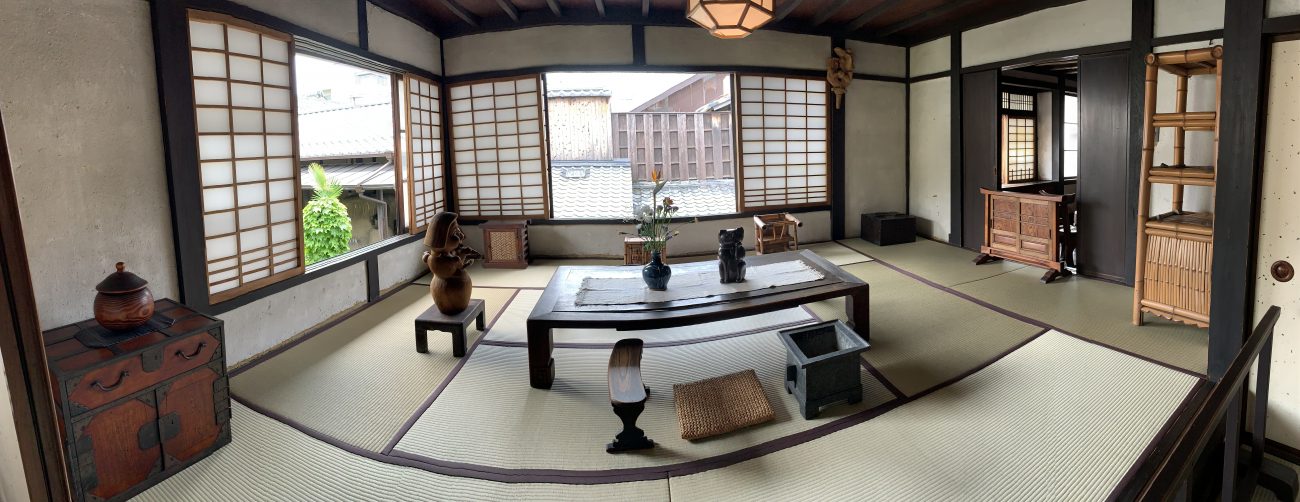After three days visiting major sights in Kyoto, we took a day to sleep in and explore some less traveled paths at our leisure – all close to our guest house. It turned out to be one of our most memorable days.
Kawai Kanjiro’s House
Nestled among a narrow street of quiet brown houses in Southern Higishiyama is the home of late Japanese potter, artist and writer Kanjiro Kawai, now called the Kawai Kanjiro Memorial Museum. Though not on many must-see lists in Kyoto, it was an inspiring visit that ranked among our highlights.


The house is small and unassuming from the outside, but upon entering the size and beauty of the two-story home is remarkable. Kawai designed it himself along the lines of an old farmhouse. Wood furniture, which he also designed, is dark and sturdy, and other works in the house come from all parts of Japan and Asia, many from the countryside.
Kawai was an important figure not just for his own work, but as one of the men who led a folk art movement in Japan. At a time when handicrafts were disappearing from the countryside, he and his colleagues urged families to keep making pottery, paper and cloth in their spare time, helped establish shops in the cities where they could sell their work—shops that today are flourishing.
We wandered outside through gardens and back in, viewing a small kiln and then a large climbing kiln with eight chambers he built himself. A selfless man who never signed his work, Kawai was most known as a potter, but he also produced sculpture, wood carvings, and calligraphy, all of which can be found throughout his house. The home’s pottery, art, furniture and architecture form a beautiful and inspiring experience.
Getting There: From Gion, we headed south on Higashioji-dori and found it past the Higashioji-Gojo intersection, a block over on the right.
Kennin-ji Temple
Kennin-ji Temple was quite simply one of our favorite places in Kyoto. The oldest Zen temple in Kyoto, it was founded by Yousai, a Zen priest who popularized the practice of drinking green tea and is the founder of the tea ceremony in Japan. History aside, we probably never felt as peaceful as we did on the afternoon we spent at Kennin-ji.

The design of the temple and gardens could not have been more perfect, from the Cho-on-tei Garden that offers a beautiful view from any direction and the Hojo/Daiouen dry landscape garden to the main hall, every detail was picturesque and flowed naturally into the next. The main hall features sliding doorway paintings by Kaiho Yusho in the Momoyama era.
In April 2002, the 800th anniversary of Kennin-ji was celebrated by the installation of the Twin Dragons painting on the ceiling, created with ink on thick traditional Japanese paper in a gymnasium of an elementary school in Hokkaido.

This is the temple adjacent to our guest house and we passed it several times before spending an afternoon there. We wondered why we waited. Kennin-ji does not get the attention of the larger temples, but it’s well worth a few hours for anyone visiting Kyoto.

Up Next: Kyoto Fibers – From Kimonos and the Nishijin Textile Center to Sashiko Stitching and Handmade Paper
— Two Down Dogs
















